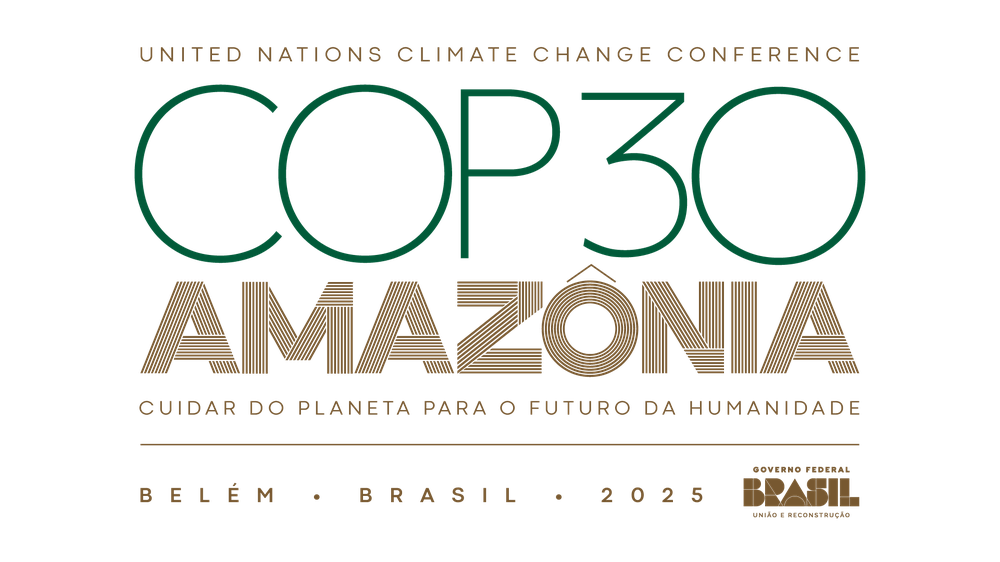Quarterly International Carbon Update: Q3 2025
The story of climate action over the past 10 years is one of partial success, with hope fuelled by what has been achieved, and a sober recognition of all that still needs to be delivered. In this quarterly deep dive, we take a closer look at what’s happening on the ground right now.

The Paris Agreement, adopted at COP21 in 2015, stands as a truly transformative milestone in global climate policy. The treaty mobilised action, set common goals, and changed the terms of environmental diplomacy, setting nearly 200 countries/nations on a joint mission to limit global warming well below 2°C, aiming for 1.5°C, and committing to net zero CO2 emissions by the second half of this century.
It catalysed a fundamental shift: projected warming in 2015 was over 4°C by 2100; with strengthened policies and pledges, it is now around 3°C if current actions continue, and 1.9°C if all pledges are fully implemented.
Policy Headwinds
While the Paris framework remains the backbone of international climate action, the past decade has brought many obstacles and challenges. Intensified global tensions – including wars, trade conflicts, and populist backlash – have disrupted supply chains and weakened the resolve for coordinated action, most starkly evident in wavering commitments from some major economies. From 2019 to 2021, governments around the world added more than 300 climate-adaptation and mitigation policies each year. In 2023, the number dropped under 200, and in 2024, it was only around 50.
Green Energy Boom
Despite this perceived widespread retreat from climate politics over recent years, global investment in renewable energy projects continues to climb, reaching a record $386 billion in the first half of 2025, marking a 10% increase from the previous year, with this growth driven primarily by off-shore wind and small-scale solar. Last year renewables made up 93% of global power capacity additions.
Trend Climate
The path to 1.5°C is still open, but it is narrowing rapidly. Success will depend on the world’s ability to overcome political, economic, and social fragmentation in the decisive years ahead. In the run-up to COP30, which is taking place in Belém, Brazil from 10–21 November 2025, we take a closer look at what is happening on the ground right now.

Q3 2025: Sentiment in AMER (North, Central, & South America)
Sentiment in the Americas, especially the US, is currently marked by increasing polarisation and uncertainty. The Biden administration’s legacy of large clean energy investments has given way to policy reversals and scepticism under new leadership, leading to a narrowing of the US sustainability agenda and more open support for conventional energy sources. This has triggered substantial withdrawals from US ESG (Environmental, Social, and Governance) funds – 10 quarters in a row – reflecting a notable backlash against ESG and net zero initiatives. While public and corporate engagement with sustainability persists in some quarters, deregulation and prioritising economic concerns over climate action have softened executive and investor commitment.
Q3 2025: AMER Headline News
- Manhattan, NYC (23 September 2023), UN Climate Chief Says $1.3 Trillion is Needed Annually in Climate Finance: Speaking at Climate Week – the world’s largest climate gathering outside COP – UN Climate Change Executive Secretary Simon Stiell called for urgent acceleration of climate action by governments and business leaders ahead of COP30. Despite global clean energy investments reaching $2 trillion in 2024, and the majority of new renewables being cost-competitive with fossil fuels, much industrial decarbonisation remains stalled. Stiell emphasised the need to mobilise $1.3 trillion annually in climate finance, and ensure climate benefits reach emerging economies.
- Washington, DC (29 July 2025), US Environmental Protection Agency (EPA) Proposes to Repeal the 2009 Endangerment Finding: This foundational finding – a scientific and legal determination that greenhouse gas (GHG) emissions endanger public health and welfare – has allowed the EPA to regulate carbon emissions from vehicles, power plants, and industrial sources under the Clean Air Act. The proposed rollback seeks to eliminate the EPA's authority to manage climate pollution, which critics warn would weaken protections against extreme heat and rising energy costs, undermine decades of science-based regulation, and expose Americans to greater health and economic risks. Supporters argue the move will reduce regulatory burdens and restore consumer choice. However, the reversal is seen as a significant retreat from climate responsibility, threatening to disrupt national and global efforts to fight climate change, and spark legal challenges from States and environmental groups concerned about the impacts on public health and the environment.
- Rio de Janeiro, Brazil (7 July 2025), BRICS Summit Focuses on South-South Collaboration: Major emerging economies – Brazil, Russia, India, China, and South Africa – united around a bold climate agenda, pledging stronger climate finance, transparent carbon accounting, and a new developing country-led platform that links trade and sustainability goals. The summit foregrounded technology transfer, resilience-building, and protecting tropical forests, with leaders endorsing both more climate lending and the Tropical Forest Forever Facility. As the world anticipates new national climate commitments from BRICS ahead of COP30, this coalition’s focus on equity, adaptation, and South-South collaboration signals growing momentum for a just transition and inclusive green growth.

Q3 2025: Sentiment in EMEA (Europe, Middle East, & Africa)
In the EMEA region (especially Europe), sentiment is resilient but challenged. Europe continues to lead in ESG assets (with 83% of global ESG investments), and most investors report continued commitment to sustainability goals despite slowing fund inflows and some negative sentiment resulting from perceived market greenwashing, investment outflows, and the burdens of regulatory change. Ongoing debates around reporting complexity, regulation deadlines, and anti-greenwashing measures are key features of the current landscape, but overall, the majority of institutional investors and corporates remain engaged, viewing ESG as a necessary and permanent feature of business and finance.
Q3 2025: EMEA Headline News
- Brussels, Belgium (18 September 2025), EU Pledges to Reduce GHG Emissions by 66.25 to 72.5% by 2035 Compared to 1990 Levels: Ahead of submitting its new NDC at COP30 and finalising its 2040 climate target, experts warn that the EU's wide target range risks sending mixed signals, undermining investor confidence, jobs, energy security, and industrial competitiveness. Staying on track for climate neutrality by 2050 requires a credible and clear pathway, ideally aiming for the higher end of this range to avoid an abrupt effort later. The EU possesses the tools and economic strength to lead the clean energy transition, and with stronger ambition aligned with science and business demands, it can secure a resilient, competitive economy with clean jobs and enhanced energy security.
- Addis Ababa, Ethiopia (10 September 2025), Second Africa Climate Summit (ACS-2): African leaders launched bold initiatives, including pledges of up to $100 billion for the Africa Green Industrialisation Initiative and proposals for new climate innovation hubs, emphasising homegrown solutions, renewable energy, and climate-resilient infrastructure. The summit highlighted Africa’s shift from passive aid recipient to active investor in its own future, driving reforms in climate finance, pushing accountability, and delivering a unified message ahead of COP30 that Africa aims to be a leader – rather than a victim – in shaping global climate action and sustainable development.
- Yaoundé, Cameroon (11 July 2025), International Conference on the Blue Economy: Eight Gulf of Guinea countries – Angola, Benin, Cameroon, Côte d’Ivoire, Equatorial Guinea, Liberia, Nigeria, and Republic of Congo – adopted the Yaoundé Declaration, pledging to sustainably manage 100% of the ocean areas under their national jurisdiction by 2030. This regional commitment involves the development of Sustainable Ocean Plans that will guide the responsible use, protection, and restoration of marine ecosystems, address illegal fishing, and boost marine security, directly supporting international initiatives such as the Ocean Panel and the 100% Alliance.
- Brussels, Belgium (2 July 2025), European Commission Proposes Integrating International Carbon Credits into the EU's Legally Binding 2040 Climate Target: This would allow up to 3% of the targeted 90% net emissions reduction (from 1990 levels) to be met through the purchase of high-quality carbon credits from projects abroad, such as forest restoration in Brazil. Aimed at adding flexibility to a stringent goal amid political pushback and economic challenges faced by European industries, this move would reduce the domestic emissions reductions and investments required within the EU. While proponents argue that it channels essential funding to developing countries for CO2 reduction and promotes global co-operation, critics and environmental campaigners warn that reliance on carbon credits might undermine local climate action and has been tarnished by past projects failing to deliver promised climate benefits. The Commission plans to introduce strict quality and origin standards for these credits, aligning with emerging UN global carbon market rules to avoid previous scandals, and the final target including these provisions will undergo negotiations with EU countries and the European Parliament.
- Brussels, Belgium (2 July 2025), European Commission Proposes Cutting EU's GHG Emissions by 90% by 2040 Compared to 1990 Levels: This ambitious yet realistic target aligns with scientific recommendations to keep the bloc on track for climate neutrality by 2050. It demands strong domestic actions, including phasing out fossil fuels, scaling up renewables, electrifying transport, and halting deforestation, while limiting reliance on carbon credits to maintain credibility. The proposal calls for a clear national climate plan by September 2025, aiming for a 72.5% economy-wide reduction by 2035 to strengthen industrial competitiveness, energy security, and global climate leadership ahead of COP30. Effective monitoring and verification are essential to ensure transparency and prevent emissions leakage.

Q3 2025: Sentiment in APAC (Asia & Pacific)
APAC sentiment is characterised by cautious momentum and opportunity. The region is optimistic – APAC stands to gain the most from net zero success, with strong projected economic benefits, yet faces huge investment needs and execution risks. While 53% of top companies now have net zero commitments (up from 47%), only a minority of targets are science-based or externally verified, indicating a ‘work in progress’ sentiment balancing ambition and capability. Disclosure quality and coverage, especially for Scope 3 emissions, continues to improve but remains uneven, with a growing but pragmatic push for better data and impact measurement. The public tone is less politicised than in the US, with strong regional government drivers shaping the corporate sustainability agenda.
Q3 2025: APAC Headline News
- Sydney, Australia (18 September 2025), Australian Government Pledges Ambitious New Climate Target Whilst Approving Major Fossil Fuel Projects: Australia – one of the world's biggest polluters per capita – announced a new climate target to cut carbon emissions by at least 62% below 2005 levels by 2035 (a significant step up from its previous 43% by 2030 pledge), following a landmark government risk assessment warning of increasingly extreme climate impacts, including deadly heatwaves, floods, bushfires, and sea-level rises threatening millions. While the target aligns with advice from the Climate Change Authority and Australia’s Paris Agreement obligations, it remains politically divisive, especially as the government continues to approve major fossil fuel projects.
- Beijing, China (26 August 2025), China's Carbon Market to Introduce Absolute Emissions Caps From 2027: Marking a significant shift from its current carbon intensity-based emissions trading system (ETS), China’s move to introduce absolute carbon emissions caps in key industrial sectors starting in 2027 will initially target industries with relatively stable emissions. The national carbon market will feature a combination of free and paid carbon emissions allowances (CEAs), and aim for a fully developed nationwide ETS by 2030. This reform intends to strengthen climate accountability, increase liquidity by allowing financial institutions into the market, and boost pressure on industries to decarbonise, supporting China's 2030 peak emissions and 2060 carbon neutrality goals. However, the impact on emissions reduction remains to be seen due to past concerns about allowance oversupply and market transparency.
- Beijing, China (24 July 2025), EU and China Issue Joint Climate Statement: Marking 50 years of diplomatic ties, the EU and China issued a joint declaration committing to strengthening emissions reduction efforts and submitting updated national climate plans ahead of COP30. It highlights ambitions to accelerate renewable energy deployment and provide access to green technologies globally. This collaboration signals a crucial multi-lateral effort to uphold global climate governance, underscoring the importance of climate co-operation rising above geo-political tensions.
- Kuala Lumpur, Malaysia, Energy Asia 2025 Conference Report Says Given its Scale and Complexity, Asia Cannot Simply Replicate Global Energy Transition Models: Home to 60% of the world’s population, the APAC region relies on fossil fuels for 85% of its energy needs, which accounts for half of the world’s CO2 emissions. The region must tackle a dual challenge of doubling energy demand by 2030 while cutting emissions. Key challenges identified include infrastructure gaps in grid readiness, transmission, and storage, alongside the critical need for regional energy inter-connectivity through initiatives like the ASEAN Power Grid and Trans-ASEAN Gas Pipeline. The event also called for increased financial support to unlock Asia’s clean energy potential and advocated inclusive, realistic energy transition strategies that integrate fossil fuels with carbon capture and renewable solutions, reflecting the region’s diverse economic and energy contexts. Most notably, by July 2025, China was responsible for building 74% of wind and solar projects worldwide.

Significance of COP30
Ten years post-Paris, the global call for bolder climate pledges, accelerated implementation, stronger finance commitments, and greater attention to nature, adaptation, and social justice is growing louder. Whether COP30 delivers on these goals may depend on bridging ambition and finance divides, as well as translating promises into measurable, enforceable action.
COP30: Key Expected Outcomes
- Updated Climate Pledges From All Member States: All Parties to the United Nations Framework Convention on Climate Change (UNFCCC) are expected to submit updated Nationally Determined Contributions (NDCs) for COP30.
- Tripling Renewables, Doubling Energy Efficiency: The Action Agenda is the pillar of the Climate Convention that mobilises voluntary climate actions by civil society, companies, investors, cities, states, and countries/nations to intensify emissions reductions, adaptation to climate change, and the transition to sustainable economies, as provided for in the Paris Agreement. It includes a commitment to triple renewable energy capacity and double energy efficiency, set as core benchmarks for delivering near-term emissions reductions.
- Transitioning Away from Fossil Fuels: Negotiators will push for a clearer global agreement on phasing out fossil fuels in an ‘orderly and equitable’ manner, moving beyond the more ambiguous pledges of recent years.
- Climate Finance and Loss and Damage: COP30 will spotlight the need to operationalise the new global climate finance framework, including increased funding for adaptation, mitigation, and ‘loss and damage’ – especially for vulnerable and developing countries/nations. Clearer, more binding commitments are expected.
- Adaptation Indicators and Global Goal: Parties are under pressure to finally agree on clear metrics and indicators for adaptation progress, making it possible to measure country efforts and global advances in climate resilience.
- Indigenous Leadership and Social Justice: Greater emphasis is placed on indigenous knowledge, rights, and leadership, as well as integrating social equity and climate justice into mainstream decision-making.
- Technology, Digital Solutions, and Cross-cutting Innovation: The agenda includes scaling up digital public infrastructure, AI, and innovation in climate tech to accelerate, measure, and verify progress.
- Biodiversity, Forests, and Nature-based Solutions: With Brazil hosting, we can expect initiatives to halt deforestation (especially in the Amazon), restore degraded ecosystems, and advance nature-based climate solutions to take centre stage.
COP30: Predictions & Challenges
- Ambition Gap May Remain: While COP30 is set up as a ‘course correction’ year, there is realistic concern that many new NDCs will not be sufficiently ambitious to limit warming to 1.5°C, leaving a gap between pledges and the Paris targets.
- Decisive Step in Delivery: Brazil’s presidency aims for COP30 to be seen as a summit where real-world implementation finally takes precedence over process, operationalising many long-discussed frameworks – especially on climate finance and just energy transition.
- Tensions Over Accountability and Finance: Divides between developed and developing countries/nations are expected, particularly around finance delivery, adaptation responsibility, and who pays for ‘loss and damage’. Resolution or substantial progress on this front will be viewed as a major marker of success.
- Momentum from Non-state Actors: Sub-national governments, corporations, and civil society are anticipated to play a larger role, with outside pressure possibly driving up ambition beyond formal negotiations.
- Risk of Global Distraction: Political changes in major economies (e.g. US, EU, or China) and slow economic growth could dampen expectations, though the sense of climate urgency is likely to keep pressure high on all sides.

